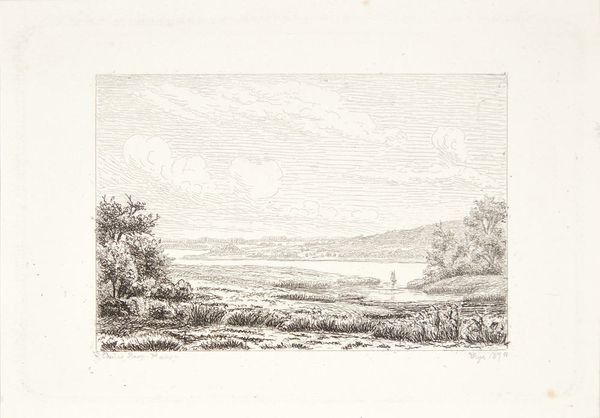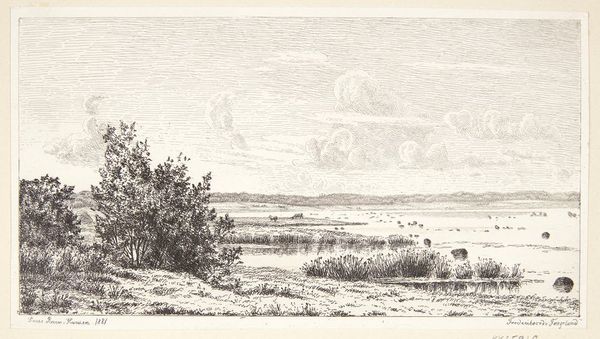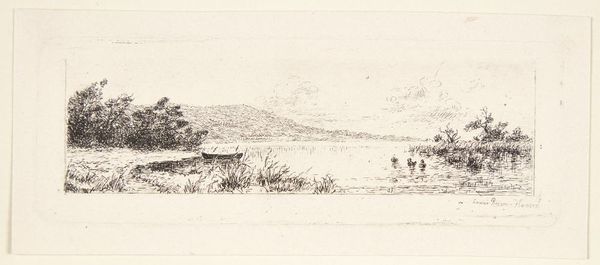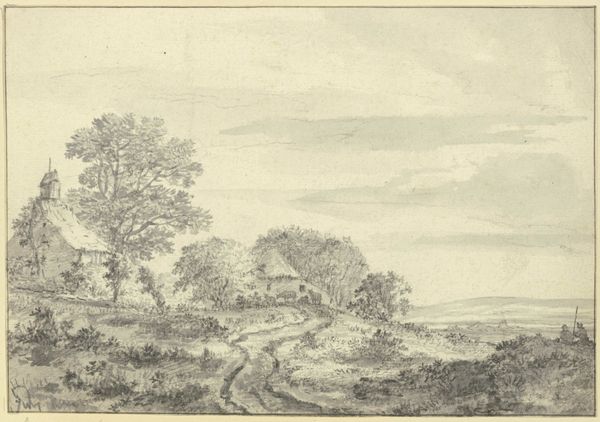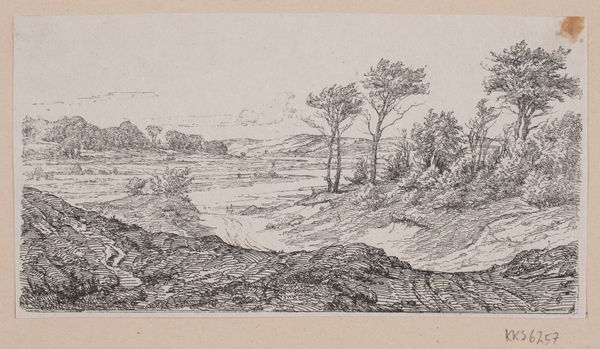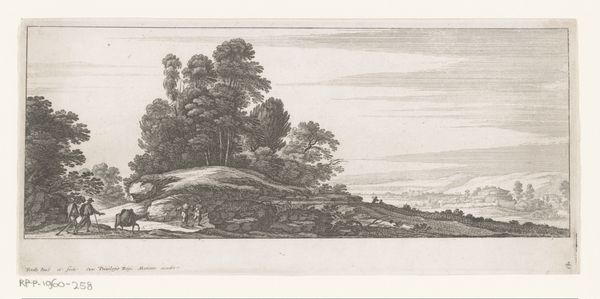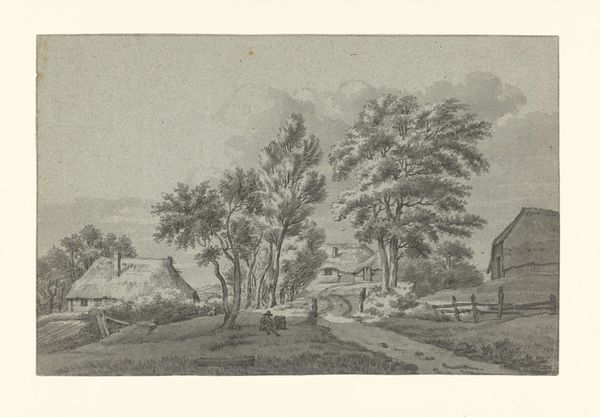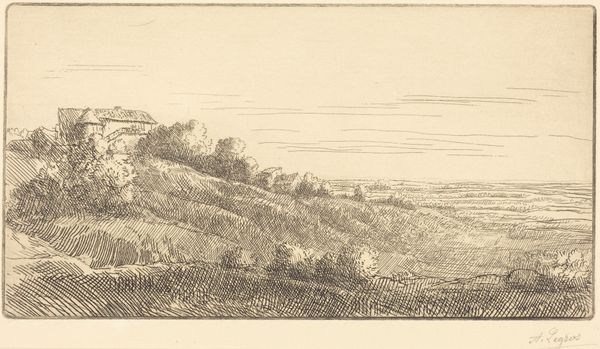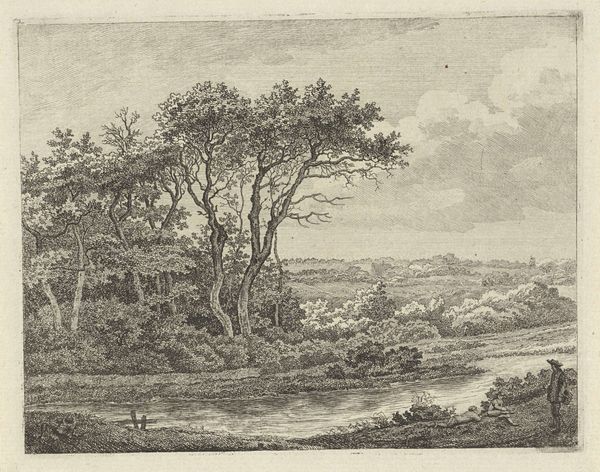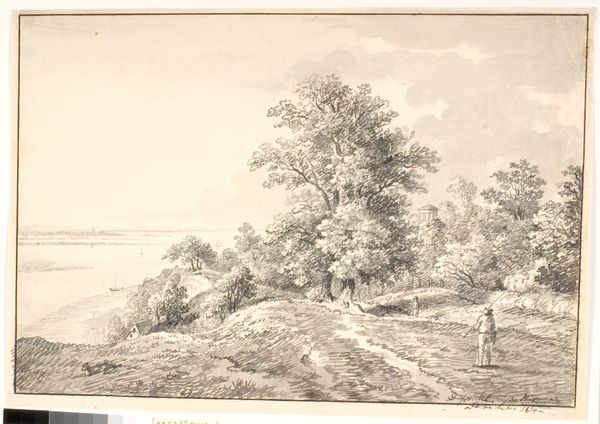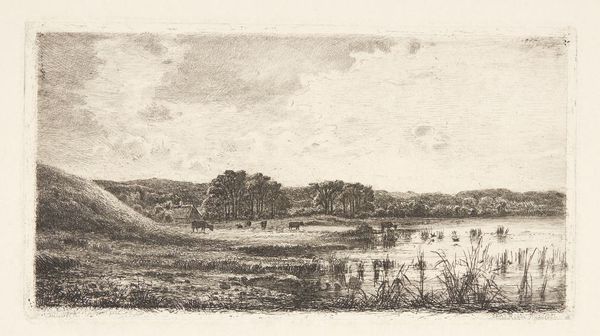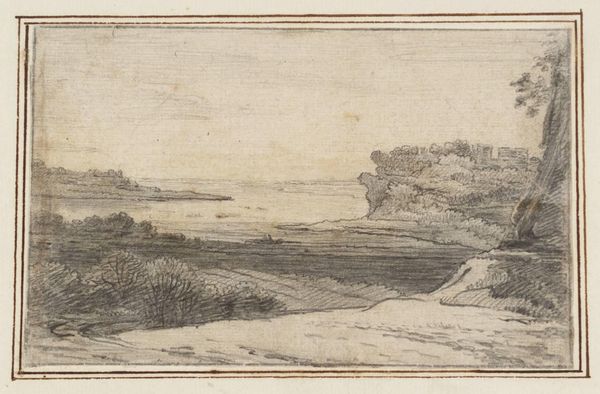
print, etching
# print
#
etching
#
landscape
#
etching
Dimensions: 66 mm (height) x 95 mm (width) (bladmål)
Curator: Looking at Louise Ravn-Hansen's "Rye Mølle Sø" from 1879, rendered as an etching, I immediately note the precision of line work, almost a mechanical reproduction. The way she captures light and atmosphere through those dense, hatched marks—it’s quite compelling from a purely technical perspective. What strikes you initially? Editor: An unsettling quietness pervades this landscape. I feel it pulls the viewer into a space of solitude, perhaps reflecting on Denmark’s historical identity. There’s something about the subdued tones and vast expanse that hints at the relationship between land and belonging, and access to that belonging. Curator: An interesting take. As an etching, we must consider the labor involved—the repetitive act of incising lines into a metal plate. Was this process seen as 'lesser' than painting during that period? Ravn-Hansen engages with mass production through prints, creating access that could disrupt classist notions surrounding fine art. Editor: Precisely. Etchings like these democratized landscape imagery, taking these scenes beyond elite ownership. But I’m also curious about the lack of human figures. Does that absence underscore the precariousness of human existence within the grand narrative of land, nature, and a nation’s claim over territory? Whose stories are being excluded? Curator: Indeed, her technical facility becomes almost subversive when we view the broader implications. This wasn't merely about depicting scenery; it challenged conventional, established norms surrounding art consumption and how these sceneries become national symbols. And who owns and controls the materials? Editor: It brings to mind theories around land use and national identity formation. When we ask, 'who does this land serve?' we open pathways into discussing environmental and social justice. Can we frame this delicate landscape as a precursor to modern environmental discourse? It asks how industrial processes of etching affect nature, represented on an intimate scale. Curator: Absolutely. Appreciating her technique becomes interwoven with appreciating what she’s critiquing and even providing space to the underrepresented. Etching, as a mode of reproduction, becomes entangled with broader issues of accessibility, materiality and historical narrative. It changes everything we think we see. Editor: And it forces us to confront not only the landscape on the paper but the landscapes of social and political reality. Thanks to Ravn-Hansen's process, it remains a profoundly thoughtful piece.
Comments
No comments
Be the first to comment and join the conversation on the ultimate creative platform.
